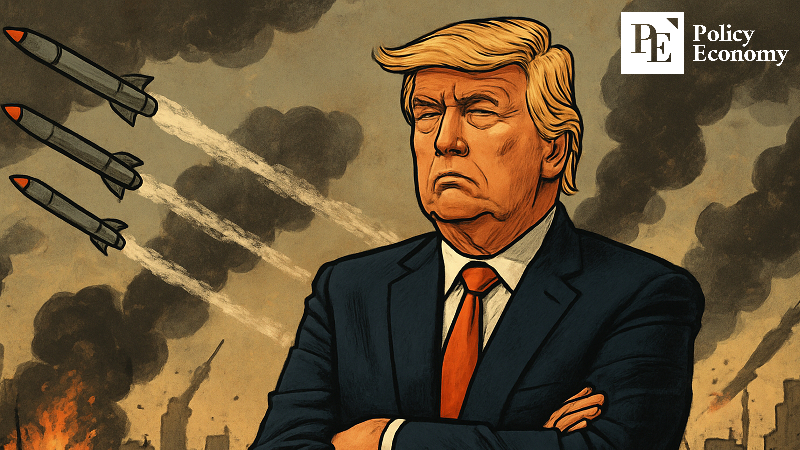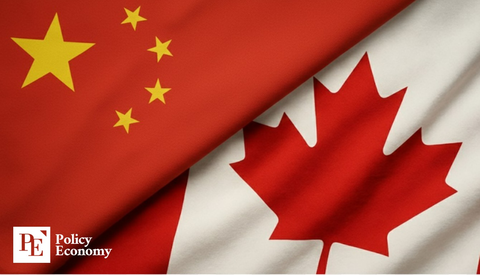U.S. Congress Approves Major Defense Budget Hike, Emphasizes Expansion of Munitions Production Amid Rising Geopolitical Threats
Input
Modified
U.S. Congress Approval of $850 Billion Defense Budget Substantial Increase Beyond Presidential Request Focus on Proven Combat Effectiveness of Small Drone Programs

The U.S. Congress has approved a sweeping increase in the defense budget, aimed at consolidating military superiority in response to rising military expenditures by adversarial states such as China, Russia, North Korea, and Iran. The appropriations package notably emphasizes expanded munitions production capacity. Since taking office, President Donald Trump has pursued a restructuring of defense spending with a focus on practical combat readiness—such as nuclear and missile defense modernization—and the latest budget package aligns with that strategic doctrine.
$7.3 Billion in Additional Funding Allocated to Precision Munitions and Industrial Capacity
On August 4 (local time), Senate Appropriations Committee members Mitch McConnell (R-KY) and Chris Coons (D-DE) jointly announced that the Senate panel had passed the $852 billion FY2026 defense budget by an overwhelming vote of 26–3. The legislation exceeds the president’s initial budget request and prioritizes resumed aid to Ukraine and U.S. military modernization. The two senators underscored that “a sound investment in military power is required to counter nations pouring massive resources into defense, including China, Russia, Iran, and North Korea.”
A key highlight of the appropriations bill is its substantial investment in munitions manufacturing. Congress allocated an additional $7.3 billion to support production across critical supply chains. “Recent naval operations in the Red Sea, where the U.S. responded to Houthi rebel attacks to safeguard freedom of navigation, demonstrated just how rapidly high-end precision weaponry and ammunition can be depleted,” noted McConnell and Coons. “Last month, the Department of Defense acknowledged ongoing severe shortfalls in high-demand items such as shipbuilding and has formally requested supplemental support from Congress.”
This selective budget expansion echoes the Trump administration’s broader effort to realign defense outlays. Earlier this year, Defense Secretary Pete Hegseth directed senior officials to prepare for an 8% annual reduction in defense spending over the next five years. “President Trump has tasked the Pentagon with restoring deterrence and securing peace through strength,” Hegseth stated at the time, adding that “unnecessary expenditures must be eliminated in favor of combat-ready capabilities to rebuild our military.” These cuts are thus framed not as austerity measures, but as strategic realignments.
In line with this prioritization, certain programs were exempt from cuts based on strategic significance. Budgets tied to the Indo-Pacific Command—which includes U.S. Forces Korea—along with the Northern and Space Commands, and southern border operations related to Trump’s key border security pledges were shielded from reductions. Funding for nuclear and missile defense modernization and key munitions procurement was also preserved. Reflecting the same priorities, the latest congressional budget increase includes expanded allocations for small combat drones. Reuters noted that “drones have proven to be both cost-effective and highly lethal in the Ukraine conflict, cementing their status as indispensable battlefield assets.”
NATO Commits to Massive Defense Spending Increase, Targeting 5% of GDP by 2035
Conversely, the budgets for the European, Central, and African Commands are facing reductions. This move appears to be consistent with Trump’s pressure campaign to curtail support for Ukraine and push NATO allies to significantly boost their own defense expenditures. In response, the 32 NATO member states agreed at last month’s summit to increase defense spending to 5% of GDP by 2035. The roadmap calls for dedicating at least 3.5% of annual GDP to weapons procurement and force augmentation, while allocating up to 1.5% for infrastructure protection, cyber defense, and defense industrial base development.
While this declaration carries no legal weight and remains a political commitment, it signals an unprecedented military build-up by NATO members. Even under conservative projections for GDP growth and inflation, the bloc's total defense outlays are expected to rise dramatically. According to the Netherlands-based think tank Transnational Institute (TNI), if NATO members raise their defense budgets to 3.5% of GDP by 2030, total spending will reach $13.4 trillion—$4.3 trillion more than the projected $9.1 trillion required to maintain current levels.
This upsurge in defense budgets is likely to benefit U.S. firms disproportionately. Given the impracticality of significantly increasing troop numbers, most of the 3.5% earmarked for military buildup will inevitably go toward weapons and equipment, much of which is supplied by U.S. defense contractors. Consequently, while the financial burden formally rests with Europe, the bulk of these expenditures will flow back to American industry. The same applies to the broader 1.5% defense category, where U.S. dominance in cybersecurity, intelligence gathering, and critical infrastructure protection renders exclusion from NATO planning all but impossible.

Washington Calls for Burden Sharing from Allies, Emphasizes Minilateral Coalitions
President Trump’s defense restructuring also reflects a deliberate strategy to push for greater responsibility and cost-sharing from U.S. allies in the Indo-Pacific. Last month, Deputy Secretary of Defense for Policy Elbridge Colby reportedly pressed Japanese and Australian defense officials for clear commitments regarding their roles in the event of a military conflict with China over Taiwan. Colby, a key architect of the MAGA (Make America Great Again) national defense agenda, has long advocated for allied participation in efforts to counterbalance China.
In response, Japan’s Ministry of Defense offered only a generic statement, pledging to act “in accordance with the Constitution, international law, and relevant domestic statutes,” while Australia refrained from articulating a firm position. Sources indicated that both governments were taken aback by Colby’s demands, given that even the United States had yet to define its security guarantees regarding Taiwan. Unlike previous administrations that strongly emphasized Taiwan’s defense, President Trump has maintained strategic ambiguity, opting instead for a minilateral approach whereby regional allies act independently yet in coordination to counter Beijing.
Some observers suggest that the Trump administration’s broader “alliance modernization” doctrine could bring Taiwan-related responsibilities to the forefront of the upcoming U.S.-South Korea summit. High-ranking government sources indicate that Washington and Seoul are currently engaged in discussions on Taiwan, and that the Pentagon is seeking a clearer definition of South Korea’s role in potential military contingencies involving Taiwan. Following similar pressures applied to Japan and Australia, this may represent another instance of the U.S. pressing allies to articulate their stance. Although the Pentagon stated that it is “in regular consultation with South Korea, with a focus on strengthening peace and deterrence,” it stopped short of confirming any specific demands.





















